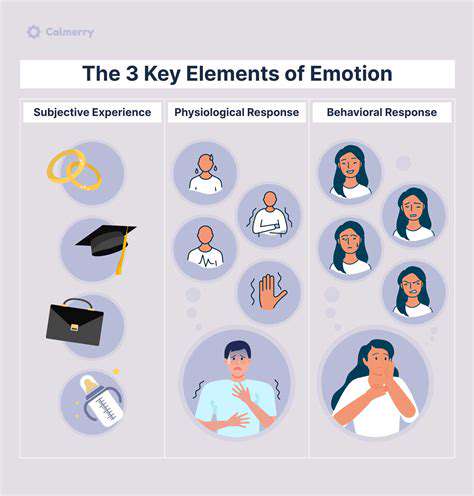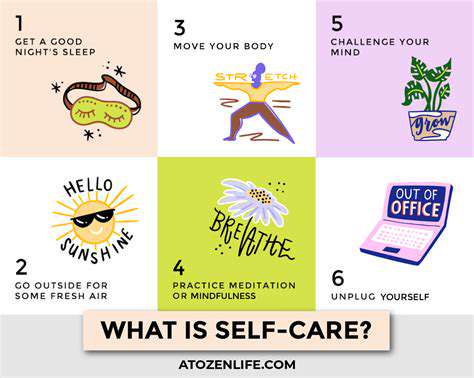Signs and Symptoms of Anxiety: What You Need to Know
Anxiety, that familiar yet unsettling companion, frequently leaves its mark on our bodies in ways we might not immediately recognize. These physical echoes of our inner turmoil can range from barely noticeable twinges to overwhelming sensations that disrupt daily life. Learning to decode these bodily signals is the first step toward regaining control and finding relief.
While everyone's experience differs, certain patterns emerge consistently. Many report an amplified awareness of their own heartbeat, unexplained muscle tightness, or sudden bouts of sweating that seem to come from nowhere.
Cardiovascular Responses to Anxiety
When anxiety strikes, our hearts often bear the brunt. That sudden pounding in your chest isn't just in your head - it's your body's ancient survival mechanism kicking into high gear. These palpitations, while frightening, are actually your body's way of preparing for perceived danger. Unfortunately, this natural response can spiral into a vicious cycle when the physical sensations themselves trigger more anxiety.
Blood pressure fluctuations frequently accompany these cardiac changes. Monitoring these variations can provide valuable insights, but becoming overly focused on them may inadvertently feed the anxiety.
Gastrointestinal Distress and Anxiety
Ever noticed how nervousness can tie your stomach in knots? There's solid science behind that sensation. Our digestive system reacts strongly to stress hormones, which explains why anxiety often manifests as nausea, stomach cramps, or sudden appetite changes. These gut reactions aren't just uncomfortable - they're tangible evidence of the powerful gut-brain connection.
Bowel habits often shift noticeably during anxious periods. Some people experience urgent trips to the bathroom, while others face frustrating constipation. Recognizing these patterns as anxiety-related can prevent unnecessary worry about more serious digestive issues.
Musculoskeletal Tension and Anxiety
Anxiety doesn't just live in our minds - it settles into our muscles too. That stiff neck after a stressful day or the tension headache that won't quit are your body's way of holding onto stress. Without realizing it, we often maintain this muscular armor throughout the day, leading to chronic discomfort that feeds back into our anxiety levels.
Sleep Disturbances and Anxiety
The relationship between anxiety and sleep is particularly cruel. Worries that seem manageable during daylight hours often magnify in the quiet of night, making sleep elusive. This sleep deprivation then weakens our emotional resilience, creating a perfect storm for heightened anxiety the next day. Breaking this cycle requires addressing both the anxiety and its impact on sleep patterns.
Chronic sleep disruption affects every aspect of functioning - from mood stability to cognitive performance - making it a critical focus in anxiety management.

Behavioral Changes Associated with Anxiety Disorders
Cognitive Changes
Anxiety disorders reshape how we think in profound ways. The mind becomes a hamster wheel of what if scenarios, making concentration on anything else nearly impossible. This mental hijacking explains why anxious individuals often report feeling like they're constantly forgetting things or missing details. The brain simply can't process normal information while simultaneously running disaster simulations.
Overthinking becomes second nature, with every decision requiring exhaustive analysis of every possible outcome. This mental exhaustion frequently leads to decision paralysis, where even simple choices feel overwhelming. Understanding that these thought patterns are symptoms rather than reality is crucial for breaking their hold.
Emotional Changes
Living with anxiety means riding unpredictable emotional waves. One moment you might feel relatively stable, the next you're swamped by inexplicable dread. These emotional tsunamis often leave sufferers feeling irritable and on edge, straining personal and professional relationships. The emotional whiplash can be so severe that many mistake it for mood disorders like bipolar.
Underneath the surface turmoil often lies a deep well of sadness - not just about specific worries, but about how anxiety has changed one's life. This secondary depression frequently goes unrecognized but significantly impacts recovery if left unaddressed.
Physical Changes
Anxiety doesn't just live in the mind - it takes up residence throughout the body. That unexplained trembling or sudden sweating isn't your imagination; it's adrenaline coursing through your system. These physical symptoms often become their own source of anxiety, creating a feedback loop that's hard to break. Many people spend months visiting various doctors before realizing their symptoms stem from anxiety rather than physical illness.
The sleep disturbances that accompany anxiety create their own set of physical consequences. Chronic fatigue leads to more caffeine consumption, which then exacerbates anxiety symptoms - another vicious cycle that requires conscious intervention to break.
Mindfulness practices, with their roots in ancient wisdom traditions, offer a powerful antidote to modern anxiety. By training ourselves to anchor in the present moment, we create space between ourselves and our anxious thoughts. This mental breathing room can transform our relationship with anxiety.

The Importance of Self-Care and Lifestyle Adjustments

Prioritizing Your Well-being
True self-care goes far beyond bubble baths and scented candles. It's about building a sustainable foundation that supports your mental health during both calm and stormy seasons. This means recognizing when you're running on empty and having the courage to press pause before you crash. Many high-achievers mistake self-neglect for strength, not realizing that consistent self-care actually enhances performance.
Developing this awareness requires tuning into your body's subtle signals - that afternoon slump, recurring headaches, or growing irritability. These are your body's way of waving red flags that often go ignored until they become crises.
Nurturing Your Physical Health
The food-anxiety connection is more powerful than most realize. That afternoon crash after a sugary lunch? It's not just fatigue - it's your blood sugar rollercoaster amplifying anxiety symptoms. Small dietary tweaks, like prioritizing protein and complex carbs, can significantly smooth out emotional volatility. Similarly, hydration affects brain function more than we acknowledge - even mild dehydration can mimic anxiety symptoms.
Movement matters too, but the no pain, no gain approach often backfires for anxious individuals. Gentle, regular activity like walking or yoga often proves more sustainable and effective than intense workouts that become another source of stress.
Mindfulness and Mental Well-being
The practice of mindfulness offers something rare in our hyperconnected world - the ability to be present without judgment. This simple yet profound skill creates space between stimulus and response, breaking automatic anxiety patterns. Starting with just five minutes of focused breathing can recalibrate an overwhelmed nervous system.
Emotional Regulation and Support Systems
Learning to navigate emotional storms is perhaps the most challenging yet rewarding aspect of anxiety management. Identifying triggers is only half the battle - developing personalized coping strategies for when those triggers are unavoidable is where real progress happens. This might mean creating a mental health first aid kit of go-to techniques for tough moments.
Equally important is cultivating relationships with people who get it - whether understanding friends or a support group. This sense of belonging counteracts the isolation anxiety often creates. Professional help shouldn't be seen as a last resort, but as expert guidance for navigating complex emotional terrain.
Creating a Supportive Environment
Our surroundings profoundly influence our mental state, often in ways we don't consciously notice. That pile of unsorted mail or cluttered workspace isn't just messy - it's visual noise that subconsciously drains mental energy. Small environmental tweaks - like designating a worry-free zone or incorporating calming colors - can have outsized impacts on anxiety levels.
Equally important is setting boundaries around technology and social media, which often function as anxiety amplifiers. Creating tech-free times and spaces allows the nervous system to reset from constant stimulation.